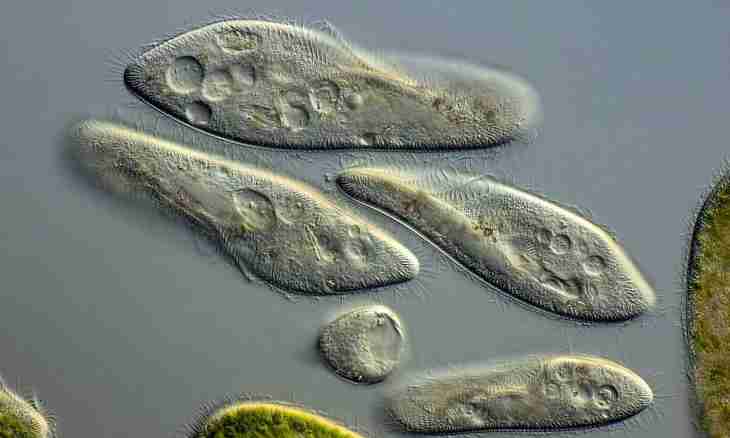Infusorians are the simplest organisms living in still water. Their little body entirely or is partially covered with so-called zhgutika – the short outgrowths reminding eyelashes. Exactly thanks to these eyelashes, the infusorian is enough dexterously and quickly moves in water. One of the most known types of these simplest organisms is the paramecium caudatum.
Paramecium caudatum – who it?
It is quite widespread type of the simplest organisms living in fresh reservoirs with still water. The main condition of dwelling of paramecium caudata are standing reservoirs with enough in them the organic materials serving as food for these protozoa. The second name of this being – a parametion having a tail of the sort Paramecium. It is curious that the structure of a paramecium caudatum is the most difficult of all representatives of this group of organisms.
Paramecium caudatum. Building
This unicell received the name because of similarity to a footwear sole. It is curious that such unusual form of this being is caused by a dense external layer of cytoplasm. All body of a paramecium caudatum is covered with the smallest eyelashes (zhgutika) located longitudinal ranks. They help an infusorian to move with the water environment: in 1 second the elementary can cover distance in 15 times more him. The paramecium caudatum a blunt end moves forward, constantly rotating during the movement around own axis.
Between zhgutika at an infusorian trikhotsist – the small spindle-shaped organellas providing it protection against external irritants settle down. Each such trikhotsista consists of a little body and a tip which (heating, collision, cooling) reacts to any irritant a sharp shot. The mouth at this simplest organism has the funneled form: when food comes to it, is surrounded food vakuolyyu, making together with it small "trip", will not be digested yet. Waste is thrown out outside through a so-called poroshitsa (specific organella). The bulk of these beings – endoplasma (liquid part of cytoplasm). Ektoplazma is near a cytoplasmatic membrane, having more dense consistence and forming a pellikula. The paramecium caudatum absorbs oxygen all the surface, existing even at its low concentration in water. All this allows by the right to call paramecium caudata the most high-organized simplest organisms, top of their evolution.
Paramecium caudatum. Reproduction
This unicell breeds in two ways: sexless and sexual. Asexual reproduction happens due to cross cell division on two equal parts. The infusorian organism at the same time keeps the activity. Further there are difficult processes of regeneration as a result of which each of parts of an organism "completes" all necessary organellas. The sexual way of reproduction of a paramecium caudatum for obvious reasons looks a little differently. Two individuals temporarily "stick together" with each other, forming among themselves a peculiar bridge of cytoplasm. At this time makronukleusa of both organisms collapse, and the smallest kernels begin to share by meiosis. After a while there are four kernels, three of which surely perish. The remained kernel shares by a mitosis. As a result, two protonukleus – men's and women's are formed. Both individuals begin to exchange "men's" protonukleusa then in each of them there is an additional merge of two kernels which is followed by formation of a sinkariaon. As a result of the next mitosis, one of newly minted kernels becomes mikronukleusy, and the second – makronukleusy.

